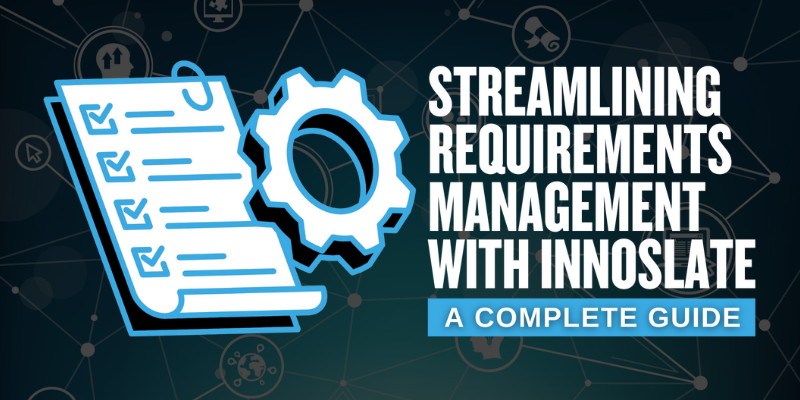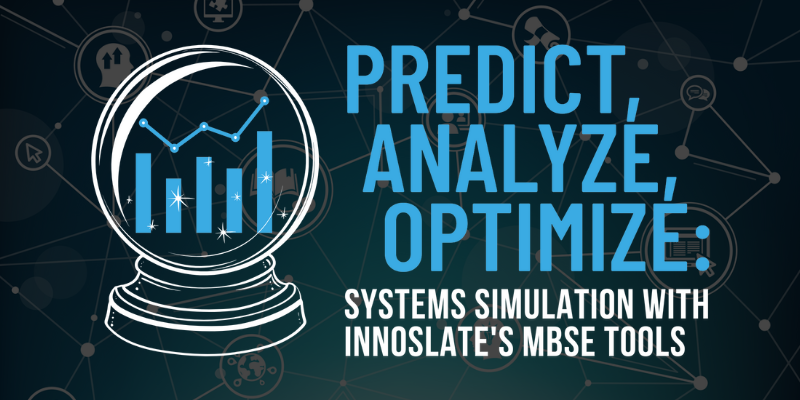2 min read
Streamlining Requirements Management With Innoslate Webinar
Don't feel like reading? Watch the webinar recording. Effective requirements management is crucial for the success of any project. As...
.png)
Want to sit back, relax, and listen? Watch the webinar recording!
In the realm of engineering and product development, ensuring that we build the right product and that we build the product right is paramount. This is where Verification and Validation (V&V) come into play. In this blog, we will explore the concepts of V&V and how Innoslate's Test Center can streamline these processes, ensuring that your projects meet all specifications and stakeholder expectations.
At its core, Verification answers the question, "Are we building the product right?" This involves confirming that the system meets the specified requirements through various methods such as analysis, demonstration, inspection, modeling and simulation, and testing. Verification is primarily concerned with the internal consistency and correctness of the product.
On the other hand, Validation focuses on whether we are building the right product. It ensures that the final product meets the needs and expectations of stakeholders and end-users. Validation typically aligns with operational testing and evaluation, emphasizing the importance of stakeholder buy-in and acceptance of the system.
The Systems Engineering V-Model provides a visual representation of the V&V process. The left side of the V represents requirements and architecture development, while the right side illustrates integration, testing, and operational maintenance.
The bottom of the V signifies the phase where the system is built, bought, or integrated. As we ascend the right side of the V, we engage in verification and validation activities, ultimately leading to the deployment and maintenance of the system.
Figure 1. Systems Engineering V-Model
Innoslate's Test Center is a powerful tool designed to facilitate the V&V process. It allows users to create and manage test cases, organize them into test suites, and track the results of testing activities. Here’s how it enhances the verification process:
The Test Center enables users to create test suites that group related test cases hierarchically. This organization helps streamline the testing process, making it easier to manage and execute tests that correspond to specific requirements.
Figure 2. Innoslate Test Center
Innoslate allows for the direct connection of requirements to test cases, ensuring that each requirement is verified through appropriate testing methods. Users can apply verification labels to requirements, indicating the method of verification (e.g., analysis, demonstration, inspection, etc.). This traceability is crucial for maintaining alignment between requirements and testing efforts.
Figure 3. Requirement Verification Relationships
During the testing phase, users can input actual results and statuses for each test case. Test Center automatically rolls up these statuses hierarchically, providing a clear overview of the testing outcomes. This feature allows teams to quickly identify areas that require attention.
Innoslate's Test Center also supports the creation of test cycles, enabling users to save current statuses and results. This functionality is particularly useful for rerunning tests and comparing results over time.
One of the standout features of Innoslate's Test Center is its ability to generate comprehensive test reports. These reports provide insights into verification methods and results, highlighting areas of success and identifying potential issues. By analyzing these reports, teams can make informed decisions about product development and ensure that they are on track to meet stakeholder expectations.
Figure 4. VCRM Report
Figure 5. RVTM Report
Verification and Validation are critical components of successful product development, ensuring that we build the right product and that we build it correctly. Innoslate's Test Center offers a robust solution for managing the V&V process, providing tools for organizing test cases, linking requirements, capturing test results, and generating insightful reports. By leveraging these capabilities, teams can enhance their testing efforts, improve product quality, and ultimately achieve greater stakeholder satisfaction.
As we continue to navigate the complexities of engineering and product development, embracing tools like Innoslate's Test Center will be essential in driving success and ensuring that our products meet the highest standards of quality and performance.
Have questions about model-based systems engineering or requirements management? Talk to an expert and see how Innoslate can streamline your projects from start to finish.

2 min read
Don't feel like reading? Watch the webinar recording. Effective requirements management is crucial for the success of any project. As...

Not up for the read? Watch the webinar recording!

Many engineers outside of systems engineering often regard the field as “less rigorous” than their fields, since systems engineers usually don’t deal...